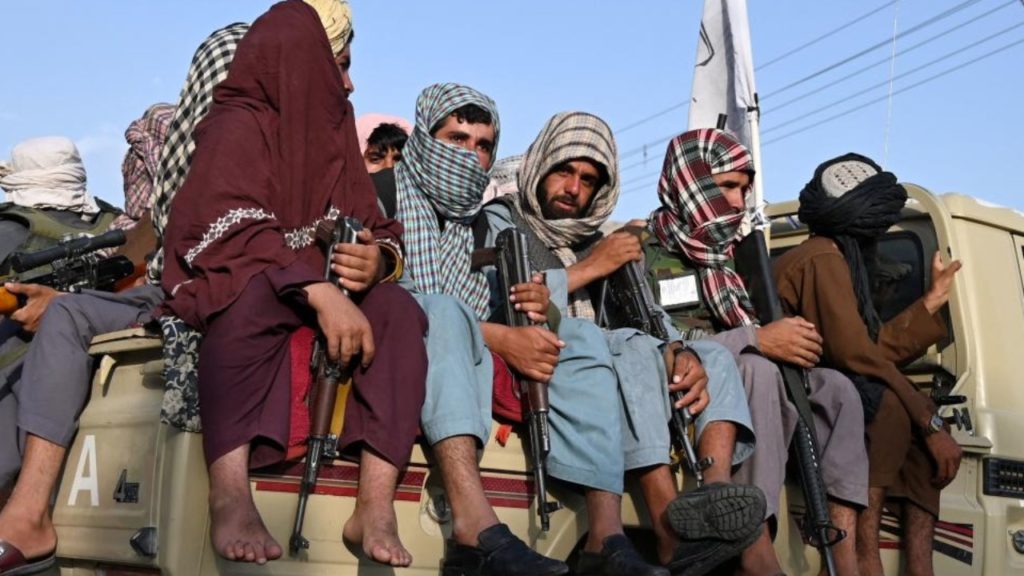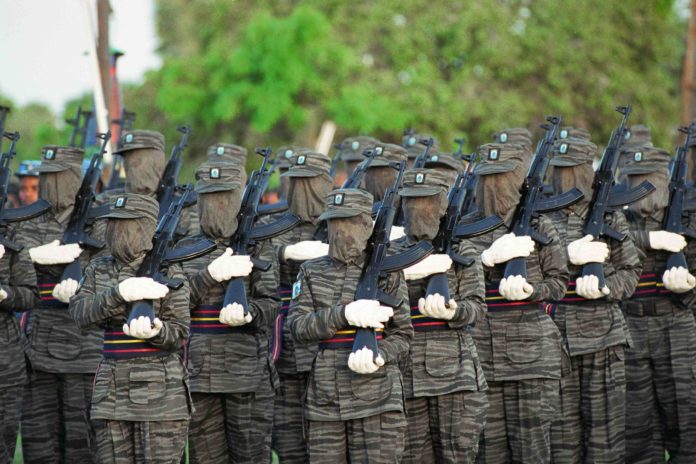The growing strategic culture of South Asia has always remained a central point of insurgency and counterinsurgency operations. The international community prefers to study South Asian culture of violence in evolving notions of state of insurgency and its undeniable influence on social, economic and political values of nations that are fighting to neutralize the emerging threats of insurgency. The history of South Asian nations has witnessed an excessive and sustained internal violence and societal turbulence parallel to their rigid inter–state conflicts. The combination of intra and interstate conflicts in South Asia has fabricated new strategic environment in which the legitimate political structures of states are rapidly becoming vulnerable to the illegitimate claims of violent non–state entities. In the presence of various regional and international efforts to defuse the threats of insurgency rooted in sub–state entities, the nations suffering from insurgency or facing the scenarios of insurgency need to revise their counterinsurgency strategies. The formulation of appropriate counter–terror plans for the execution of apposite counterinsurgency operations essentially required transnational cooperation which eventually will help leading state officials to overcome the overwhelming wave of violence and anti– state activities. The escape from contemporary nontraditional or transnational security threat is merely an illusion for developing states. Therefore, the security threats of new age have engulfed the conventional notion of national security. The developing states of global south, like Pakistan, are trying to survive in an alarming security environment which has undermined the conformist wisdom of national security. The emergence of non-state actors has enhanced their existing anti-state capabilities. The potential of non-state actors has threatened the traditional mechanisms of states under the umbrella of nontraditional security threats.
Insurgency usually refers to a serious situation in which a state faces rebellious social trends that mainly challenge the legal authority or legitimate government by threatening the formal infrastructure of a state coupled with destroying the stable security environment through advancing widespread culture of violence. Such notions of non–state actors force the state officials to design immediate countermeasure as a counter–insurgency strategy which portrays a worrisome picture. The state of insurgency, in this way, develops a zealously ferocious struggle between sub–state entitles and the sovereign state. Generally, the fight initiated by non–state actors adopts guerilla tactics under the larger rubric of irregular warfare based on secret planning and networking. The emergence of such an environment promotes a culture of insecurity among citizens alongwith exploiting various deficiencies of government in order to cultivate support in the society. The developing portions of the international system, contrary to the developed world, show a coarse picture of the state of insurgency.
The failing efforts of peaceful settlement at national, regional and international levels have activated the role of armed forces in developing regions, specifically in South Asian. The situation in Sri Lanka and Pakistan portrays an accurate analysis of states resolutely combating violent rebellions (Tamil Tigers and Taliban). The Liberation Tiger of Tamil Eelam (LTTE) in Sri Lanka comparable to Tehrik-i-Taliban Pakistan (TTP) has vividly become the two main insurgent groups of South Asia. The concealed presence of both non–state groups has resulted in an environment of challenging security situation for Colombo and Islamabad. The military operation has become a politically unquestionable and practically the only viable option for restoration of peace and prevention of civil violence. The state authorities preferred to launch military strikes in both states, Sri Lanka and Pakistan, to overcome the emerging violence by insurgents. Threats of insurgency to Islamabad is very much analogue to Colombo before President Rajapaksa’s administration launched a decisive military operation and secured complete victory over the Tamil campaign. There are several commonalities in the deteriorating security situations of both states before the gravest threat of violent non–state actors. No doubt, Colombo has successfully prevented the threat and secured peace for Sri Lankan citizens from the Tamil campaign, it offers politically decisive and practically applicable lessons to other states in the region that face similar threats.
The state officials from Colombo and Islamabad have emphasized several times about the options of a significant military operation to prevent the violent networks of LTTE and TTP, combined with the application of a political settlement. The parallel non–state insurrections in both South Asian states offers several common grounds to study the anti–state campaigns of Tamil Tigers and Taliban in comparable dimension. Both non–state elements are rebellious in nature while displaying anti–state behaviour based on societal disturbance. The mainstream leadership of both violent campaigns overtly challenged the legitimate political structure of the states by maintaining covert activities. Both movements prefer to conduct widespread terrorism for their political objectives which has jeopardized the chances of internal peace, stability and security. Moreover, the foundations of both the stateless movements have effectively cultivated connection across the region. The extremely incontestable presence of both campaigns intensified internal environments of Sri Lanka and Pakistan by degrading the scope of social prosperity, economic development and political instability and attached stigmas to the national image of the states. Societal panic, economic crisis along with assassination and kidnapping of political leaders, in this way, have shaken the traditional structure of both states. Besides the existence of such commonalities, the concealed networking of both groups, LTTE and TTP, contains many distinctions such as the ideology, demands, nature of activities, and cross–border networking.

Apart from aforementioned analysis based on different commonalities parallel to various distinctions, the most important point of consideration is that the Tamil Tigers has accepted defeat contrary to the Taliban campaign of Pakistan which is still a grave threat to internal peace. The case of Sri Lanka is an accurate and appropriate example for Pakistan where the state authorities decisively launched an anti–Tamil operation. The attainable peace became reality in 2009 when the peace initiatives designed by Colombo and supported by regional and international stakeholder proved to be catastrophic categorically. The combating strategy against north–east portions of the Island against Tamils rebels was a decisive move of President Mahinda Rajapaksa in post peace–talk scenario. The Tamil rebel’s rejection of non–violent models along with the refusal of compromising their claims of territorial separation forced Colombo to launch a massive military operation. In reaction to military assault of SLA, internationally scattered Tamil diaspora preferred to protest against Colombo’s anti– Tamil policy. The SLA’s raid against militant Tamil outfits was an effort to prevent the violent strongholds of Tamil, propagated internationally by Tamil diaspora as an offensive act of Sri Lankan government. The violent strength of Tamils created a state of insecurity in Sri Lanka which increased the Island’s defence expenditures and security services. Initially, the Special Task Force (a paramilitary wing of police) was created to dismantle the overwhelming wave of Tamil violence.
In order to control the potential aftermaths of civil war, President Rajapaksa’s administration emphasized on the efforts of local Tamils along with their global diaspora. Because at the end of 26 years of protracted ethnic conflict in Sri Lanka, it provided an opportunity to Colombo to restore peace in the island. The demise of LTTE evidently eroded the role of various Tamil rebellion groups such as Tamil Eelam Liberation Organization (TELO, founded in 1986), People’s Liberation Organization for Tamil Eelam (PLOTE, founded in 1980), and Eelam Peoples’ Revolutionary Liberation Front (EPRLF, established parallel to PLOTE). Such minor militant groups were supervised by Tamil New Tigers (TNT) of 1972 under Prabhakaran, that later became the LTTE. The covert networking of LTTE gradually became an undeniable challenging force for Colombo. The government after applying national, regional and international modes of politically resolving the Tamil problem launched a conclusive military operation which confirmed the victory of the state over Tamil rebels.
In Pakistan, the combination of varying policies and the estranged political values against the growing Taliban insurgency has created an ambiguous security environment in which the upsurge of Taliban violence has reached its zenith by menacing the economic, political and social quarters of the state. Government officials are engaged in drawing effective combat policies without implementing a comprehensive plan to root out the Taliban malaise from the country. The termination of an ethno–secessionist conflict from Sri Lanka yields lessons for other regional states that are experiencing insurgencies. The Island’s civil war proved that the militant intentions of separatist or secessionist groups cannot achieve their goals by challenging the legitimate foundations of the state.
The government of Pakistan is objectively ambitious and demonstrably dedicated to overcome the clandestine network of Taliban. The threats to social prosperity, economic development, and political strength demands an inclusive plan and comprehensive security measures which could ensure durable peace and sustainable development in Pakistan. A pragmatic counterterror strategy based on rational analysis of contemporary security has become an essential demand. Islamabad needs to withdraw the irrationally designed equivocal strings of combating Taliban strategies.
The case of Sri Lanka is an apposite example for Pakistan where the failing of the Norway–sponsored peace plan encouraged Colombo to use massive force against Tamil Tigers. In the contemporary challenging situation, it is impossible for Islamabad to separate the Good Taliban from the Bad Taliban. The government of Pakistan needs to launch a decisive military raid against the Taliban instead of perplexing about Taliban’s status like Colombo where President Rajapaksa initiated a massive military operation to ensure victory. Moreover, the strategy of combating the Taliban should clearly announce the violent role of Taliban’s anti–state militant behaviour instead of strengthening their clerical foundations of Madrasahs. The Sri Lanka’s anti–Tamil operations prevented the chances of Tamil’s social penetration by cleaning their anti –state connections conclusively. The application of cost–benefit analysis in Pakistan’s anti–Taliban fight will help Islamabad to rationally overhaul the contemporary national security strategy by learning the lessons from previous counterterror efforts.
In order to prevent the shadows of terrorism and multifaceted faces of insurgency under unconventional warfare environment of South Asia, Pakistan needs to overhaul its ongoing anti–terror campaigns by adopting successful counterinsurgency operations of Sri Lanka. The aforementioned points of Sri Lanka’s anti–terror planning can practically cure the deficiencies of Pakistan’s anti–Taliban fight which has ruined the national infrastructure. While located in the same region, the partial application of Colombo’s counterterror model can save Pakistan from further destruction. While confidently analysing the Sri Lanka’s civil war, the lessons and strategies learned from Colombo’s anti–terror strategy can minimize the civil war like situation in Pakistan. Therefore, the chalking out of a multi–sided state behaviour (military operation and socioeconomic development), like Sri Lanka, is the only viable option for a durable resolution of Taliban issue in Pakistan.





